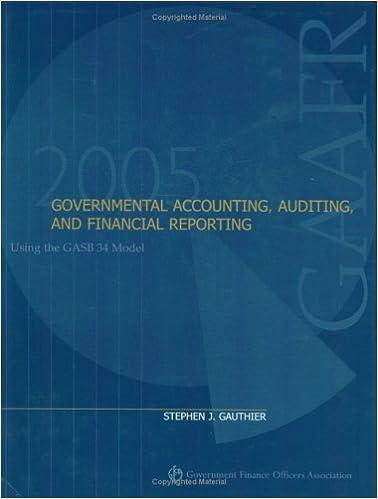Activity-Based Costing (ABC) Sarif Industries manufactures electronic testing and measurement instruments. Many products are custom-designed with recent orders for function generators, harmonic analyzers, logic analyzers, temperature measurement instruments, and data-logging instruments. The company prices its instruments at 30 percent over estimated cost (excluding administrative and selling costs). Recently, senior management has noted that its product mix has changed. Specifically, the company is receiving fewer large orders for instruments that are relatively simple to produce, and customers are saying that the company is not price competitive. The company is, however, receiving more small orders for complex instruments, and customers appear quite happy to pay Sarif Industries price. The situation was discussed at a weekly management meeting, Adam Jensen, VP of operations, blamed the company's antiquated cost accounting system. "Look," he said, "If you have bad cost information, you're going to have bad prices, and we're still doing product costing the way companies did it in the 1930s. I recall during my undergraduate program at UL Lafayette learning about activity-based costing from Dr. Green's cost accounting class, and he indicated that out-of-date costing systems make simple products look too costly and complex products too cheap. If that's true, it would explain why we're not price competitive for simple products." The meeting ended with a decision to hire a consultant to conduct a preliminary ABC study to determine how a switch to ABC would affect product cost. The consulting firm selected two recent orders for study: a 900-unit order for a temperature-monitoring device and an order for 1 harmonic analyzer. The cost and prices charged were as follows: Temperature Monitor Harmonic Analyzer $ Component cost per unit Direct labor per unit Overhead per unit Cost per unit Markup at 30% Price per unit Number of units Value of order 250 $ 25 125 400 120 520 900 2,500 500 2,500 5,500 1,650 7,150 1 $ 468,000 S 7,150 In the current system, overhead is applied based on an estimate of $30,000,000 of annual overhead and $10,000,000 of direct labor cost. The consultants have broken the $50,000,000 of annual overhead down into six cost pools and identified related cost drivers as indicated in Exhibit 1. The consultants have also found that the monitor and analyzer make use of the cost drivers as indicated in Exhibit 2. Exhibit 1: Cost pools and drivers Cost Pools Product design Material ordering and handling Inspection Setup Labor-related overhead Depreciation of plant and equipment Annual Cost 9,000,000 10,000,000 2,500,000 3,500,000 8,000,000 18,000,000 50,000,000 Annual Driver Volume 160,000 design hours 125,000 unique parts 560,000 inspections 80,000 setups $10,000,000 direct labor 225,000 machine hours Exhibit 2: Use of cost drivers The following values relate to the entire order of 900 monitors (this is not per monitor): The following values relate to the order of 1 analyzer: Number of design hours Number of unique parts Number of inspections Number of setups Machine hours 47 17 225 1 112 110 25 20 1 7 Required: 1. Based on the consultants work to date, calculate the ABC cost per unit of monitor and analyzer 2. The consultants have completed their job, and Sarif Industries has adopted an ABC system as indicated in Exhibit 1. Recently, the company received an order for a unique data-storage device. The device will require $9,000 of components and $3,000 of direct labor along with the following requirements: Use related to a data logging device: Number of design hours Number of unique parts Number of inspections Number of setups Machine hours 22 15 10 1 10 The customer has indicated that it currently has a low bid from another company of $20,000. Calculate the ABC cost of the data-logging device. Knowing the current pricing strategy, what would the lowest price Sarif Industries should offer as their bid. Should Sarif Industries compete for the order











